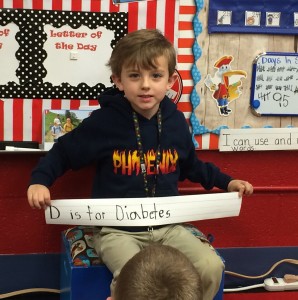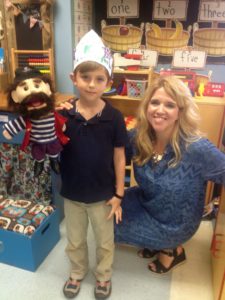
Last week our little family loaded up the car early in the morning and headed down to Baton Rouge for Hugh’s endocrinology appointment. Because Hugh has Type 1 Diabetes, he will have to see an endocrinologist every 3 months for the rest of his life. Not just until he reaches adulthood. Not just until he reaches his 40s. For the rest of his life.
That’s a lot to handle, in my opinion, so we always try to make the trip a family event. Scott and I take off work and we bring Amelia, even though I’m sure Hugh would rather his little sister not tag along most of the time. A lot of times my mom will join us as well, since we rely on her so much to help us with Hugh. Occasionally my dad will make the trip, too.
When the doctor enters the patient room, she knows to expect a crowd. She gives Hugh a hug, then turns around and gives the same hug to Amelia. It’s probably a little strange to have so many in one room, but our doctor never complains about it. I think she gets it.
On the way down to Baton Rouge on this trip, Hugh starts asking if Amelia will always have to come with us (she was being rather annoying and making all sorts of noises to irritate her brother). I told him not always – I’m sure we won’t always be able to arrange schedules and lives to be together for his appointments.
He said he hoped his wife would be able to come with us one day.
“With us? You don’t want it to be just you and your wife at your appointment?”
He replied, no – that he wanted it to be with his parents, and his wife could come along if she felt like it.
That’s right. Move over, wifey. Take your place right behind his mama. I’m sure there’s room for you in the trunk.
So why do we make such an effort to ALL go to Baton Rouge for his doctor’s appointments?
The answer is simple – I hope he looks back on these days with us and realizes he was never alone.
Type 1 Diabetes is a lonely disease. None of Hugh’s friends have to check their blood sugar. None of his friends have to wear a pump. None of his friends have to count carbs, drink juice in the middle of the night, worry about ketones, have nightmares of low blood sugars and no one helping him, skip a cupcake because of high blood sugar, or carry emergency glucagon everywhere.
It can be isolating and depressing to be the only one.
So we go. We go to show him we are in this together. He doesn’t have to face this alone. We will fight the fight right along with him. We will be the pillar when he crumbles, we will be the shoulder for the tears. We will prick our own fingers, we will carry the juice boxes. We will not leave him alone.
And friends, is there anything more in life than to know that you are not alone? There is a God who loves us, and family and friends who are by our side. What more do we need?
If I have learned anything from Hugh having Type 1 Diabetes it is that we need to show up for each other. And we need to keep showing up for as long as it takes. We don’t have to judge. We don’t have to criticize. We don’t have to put people in their place or condemn or condone. We usually don’t even have to say anything.
Sometimes, just sitting next to your big brother and reading a book in the doctor’s office is enough.



